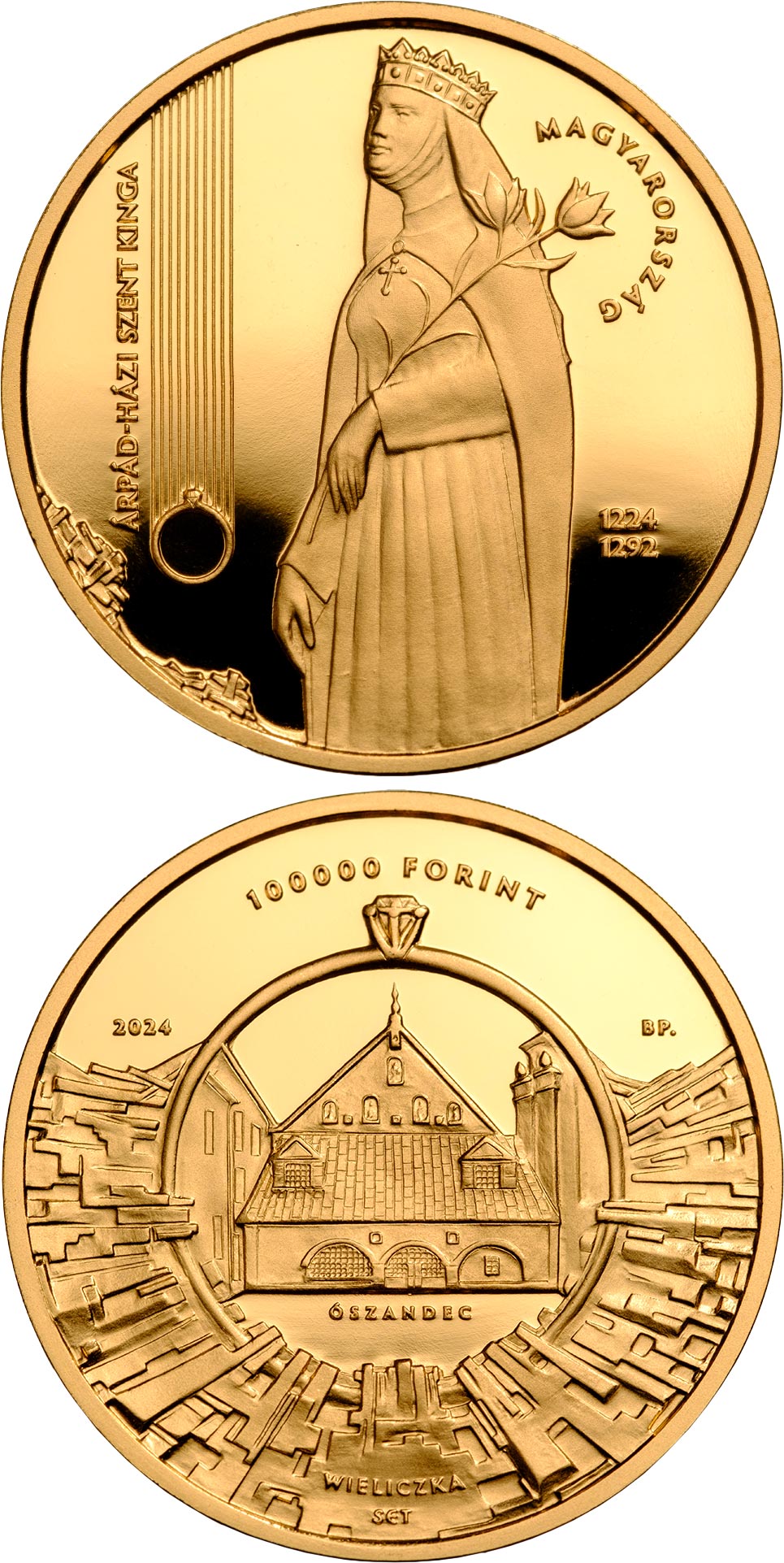100,000 forint - Saint Kinga of Hungary
Series: Hungary - Gold forint coins

On 24 July 2024, the Magyar Nemzeti Bank is issuing a gold collector coin with an exceptionally high face value of 100,000 forints and its non-ferrous metal version of 3,000 forints, on the occasion of the 800th anniversary of the birth of Saint Kinga of Hungary. The collector coin is issued as the fourth piece in the coin series presenting the saints of the Árpád dynasty, following the Saint Margaret of Hungary, the Saint Irene of Hungary and the Saint Elizabeth of Hungary coins. The Saint Kinga collector coins were designed by sculptor Tamás E. Soltra.
Saint Kinga, patron saint of salt mines, was the firstborn child of King Béla IV of Hungary and Byzantine imperial princess Maria Laskarina, sister to Saint Margaret and Blessed Jolenta, wife of Bolesław V, Duke of Poland. She is the patron saint of Poland and Lithuania.
Ever since her childhood, Saint Kinga had been deeply religious and was thus inspired to take a vow of chastity in her youth that she upheld in her marriage. In 1241, she supported the defence against the Tatars with the entirety of the dowry she brought into her marriage. After the Tatar invasion, she opened a salt mine with her husband in Wieliczka, near Kraków, with Hungary sending salt miners. This is referenced by one of the most widely known legends about Saint Kinga, the story of the engagement ring that fell into the pits of the Máramaros Salt Mine, which – in a miraculous twist – the miners found in the Wieliczka Salt Mine. She had monasteries, churches and hospitals built from the proceeds of the salt mine. This is how the monastery of Ószandec (Stary Sącz) was built, where Saint Kinga retired to after her husband’s passing, to lead a contemplative life up until her own death.
To honour the 800th anniversary of the birth of Saint Kinga of the Árpád dynasty, the Magyar Nemzeti Bank is issuing a gold collector coin with a face value of 100,000 forints and its non-ferrous metal version of 3,000 forints, as the fourth piece in the series presenting the saints of the Árpád dynasty. The primary role of collector coins is to transfer value and raise awareness; therefore, they are not to be used in everyday payments. The face value of the coins serves to preserve the value the coins represent to collectors.